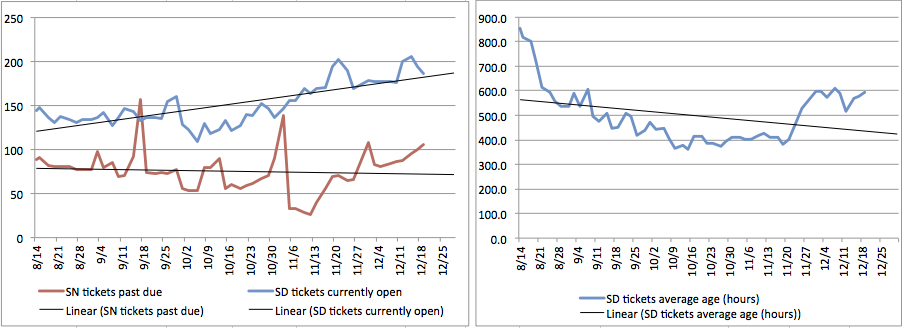You’re accessing archived content
This is archived content from the UIT website. Information may be outdated, and links may no longer function. Please contact stratcomm@it.utah.edu if you have any questions about archived content.
Successful CIS customer advocacy group inspires pilot program

By Emily Rushton
For the past five months, Common Infrastructure Services (CIS) has been working hard to improve one very important thing – customer service.
“We’ve talked about what it is that we really need to focus on,” said Craig Bennion, change manager for CIS. “What is it that we need to do, to do things better?”
That’s why in August 2014, the CIS customer advocacy group was formed, made up by Dave Adams, associate director; Scott Lloyd, IT manager; Anita Sjoblom, product manager; and lastly, Bennion.
“We really wanted to start pulling reports on an ongoing basis,” said Sjoblom. “And start to understand the tools that we have, what we can do, and what we can’t do at this point in time.”
One thing they discovered is that it can take a long time for requests to be processed due to disconnects that occur as tasks get passed from one group to another. So they began tracking all CIS tickets on a regular schedule to see how many tickets were open, how long they had been open, and identify what the appropriate action for each ticket would be.
“As we’ve worked on it, the number of tickets that are outstanding has decreased, and the length of time that it takes to close them out has decreased,” said Bennion. “So by paying attention and putting some effort into it, we’ve been able to improve those numbers and hopefully in the process, improve the overall customer experience.”
Additionally, the Help Desk tier 2 staff have been doing callbacks on tickets that are past their due date. They then meet with the customer advocacy group on a weekly basis to review those tickets.
“I feel like this has been extremely productive,” said Lloyd.
One challenge will be shifting the culture to one that pays closer attention to tickets and ensures customer communication is ongoing throughout the ticket process.
“Those are two things, from a customer service experience, that we’ve keyed in on,” said Sjoblom. “Everything is at the focus of, how do you think the customer service experience is? What’s important to them? And that’s what’s driving what we’re doing.”
And they’re already seeing improvements.
“We are seeing positive results,” said Bennion. “[The hospital] is one customer that we have where we’ve actually been doing metrics with them now for several months. And as we’ve started to monitor and watch what’s happening there, we’ve been able to improve.”
Recently, CIS collaborated with Information Technology Services (ITS) to simplify some of the categorization of tickets in the Service Desk tool, as well as create custom monitoring reports.
“They are really starting to take a look at similar metrics like what we’re looking at, because they had the same challenge,” said Sjoblom. “So it’s a win-win.”
“Our goal is to improve the overall customer experience,” said Bennion. “We’re a resource to help connect people so the things that need to happen can happen.”
The CIS customer advocacy group has been such a success that it became the basis for a pilot program for all of UIT, launched on January 15. The program provides users a single point of contact when the normal support processes aren’t meeting their needs – essentially, a facilitator to move the process along when customers feel stuck.
The point of contact will track the complaints and/or suggestions and communicate with the user throughout the process until a resolution is reached.
If you have a process improvement suggestion, or need help resolving a problem that has not been properly addressed through normal UIT channels and processes, please contact uit-advocates@it.utah.edu.
Note: This point of contact is not an emergency, 24/7 contact for help. If you need immediate help, please call the campus help desk at 801-581-4000, option 1.
